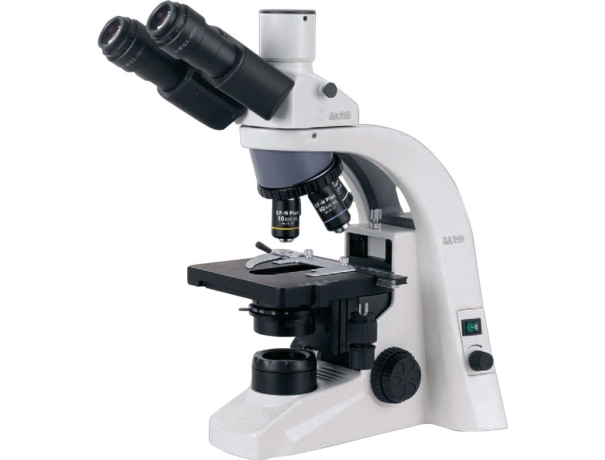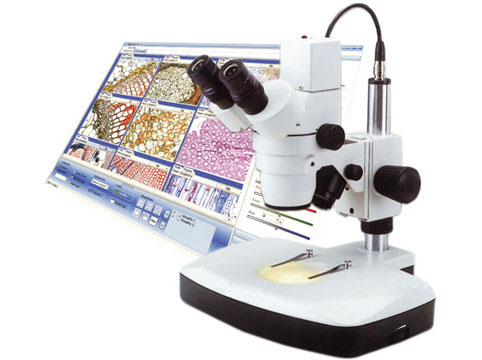Microscopes have been an essential tool for biological study since the 17th century, providing us with windows into the microscopic world that is otherwise invisible to the naked eye. Among the various types available, compound and digital microscopes stand out as primary choices for biologists, educators, students, and hobbyists. While both allow us to examine small organisms and cellular structures, each has unique advantages and limitations. Understanding these differences can help in choosing the right microscope for specific needs.
What is a Compound Microscope?
A compound microscope is a traditional optical microscope that uses multiple lenses to magnify specimens. This type typically consists of two lens systems: the objective lens, located near the specimen, and the eyepiece lens, which is looked through by the user. The combination of these lenses enables a high degree of magnification, typically ranging from 40x to 1000x, which is sufficient for viewing cells, bacteria, and other small biological structures.
Advantages of Compound Microscopes:
- High Magnification and Resolution: Offer excellent magnification and resolution, making them ideal for biological applications where detail is crucial, such as observing cellular structures.
- 3D Perspective: Offer a three-dimensional perspective, which is particularly helpful for studying cell morphology and tissue structures.
- Adaptability for Advanced Techniques: Compound microscopes can be equipped with additional components like phase-contrast, fluorescence, and darkfield filters, enabling more specialized studies.
- Affordable for Basic Models: Basic compound microscopes are widely accessible and are often more affordable than their digital counterparts, making them suitable for educational institutions and individual use.

Disadvantages of Compound Microscopes:
- Requires Manual Skills: It can be challenging for beginners, as they require skillful handling to adjust focus, light, and lens magnification for optimal viewing.
- No Built-In Imaging Capabilities: Traditional compound microscopes lack integrated imaging systems, requiring external adapters or cameras if digital records are needed.
What is a Digital Microscope?
Digital microscopes integrate a camera and display screen into the microscope’s design, allowing users to view magnified specimens on a monitor. This type does not rely on the traditional eyepiece, as images are either displayed directly on a screen or connected to a computer for real-time viewing. Digital biological microscopes often come with software that enables capturing images and video, measuring specimens, and even sharing images with others remotely.
Advantages of Digital Microscopes:
- Ease of Use: Digital microscopes are very user-friendly, requiring minimal setup and making them ideal for beginners. The absence of an eyepiece also reduces eye strain over extended periods.
- Image and Video Capture: The built-in imaging capabilities allow users to capture high-quality images and videos, essential for documentation, analysis, and presentation in educational and research settings.
- Data Sharing and Analysis Tools: Many come with software that offers advanced image analysis features, such as measurements and annotations, which can be valuable for detailed research or collaborative work.
- Remote Collaboration: The ability to connect digital microscopes to a computer enables remote collaboration, allowing multiple users to view specimens simultaneously and facilitating real-time discussions.

Disadvantages of Digital Microscopes:
- Lower Magnification Capabilities: Most of them offer lower magnification than high-end compound microscopes, which limits their effectiveness for examining fine cellular details.
- Higher Cost: Digital microscopes with advanced features tend to be more expensive than basic compound microscopes, which might be prohibitive for some users.
- Limited Depth Perception: Usually provides a two-dimensional view, which can limit depth perception and is less effective for observing 3D structures in specimens.
Compound vs. Digital Microscopes: Which One to Choose?
The choice between a compound and digital microscope largely depends on the user’s specific needs and applications. Here’s a summary to help guide the decision:
- For Educational Use and Beginners: They are often a better choice for educational settings or for beginners, as they are easier to use and allow for the sharing of images. They are particularly popular in schools and for outreach programs where visual clarity and ease of use are more important than maximum magnification.
- For Research and Professional Applications: Compound microscopes remain the standard for scientific research and medical applications. Their high magnification and adaptability for specialized imaging techniques make them indispensable for professionals and researchers needing detailed insights into cellular structures and functions.
- For Documentation and Remote Work: Digital microscopes are ideal for anyone needing to capture images and videos or for professionals working in remote collaboration. The ability to analyze, measure, and annotate directly from the microscope enhances productivity and documentation accuracy.